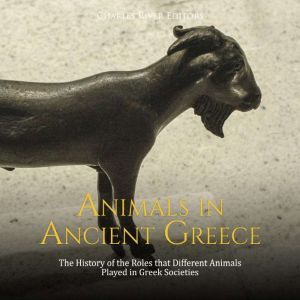
List: $6.95
| Sale: $4.87
Club: $3.47
Animals in Ancient Greece: The History of the Roles that Different Animals Played in Greek Societies
Author: Charles River Editors
Narrator: Colin Fluxman
Unabridged: 1 hr 25 min
Format: Digital Audiobook Download
Publisher: Charles River Editors
Published: 09/13/2021
Category: History - Ancient - Greece
Synopsis
To many in the ancient world, their gods and goddesses were all around them and could be seen daily in nature, which meant that nearly every kind of animal, both domestic and wild, was associated with a god or goddess. In places like Egypt and Greece, deities and other mythological characters were often depicted with human bodies and animal heads, and various Greek religious rituals relied on sacrificing animals. There were approximately 1,500 Greek city-states (poleis) in the Classical era, and sacrifices featured in every one of them. As such, animals were constantly involved in the core elements of Greek society and cults, and this centrality could be found in the numerous depictions of animals on coins and vases throughout Greece and Greek colonies. Greek thinkers and philosophers also endlessly debated issues relating to animals, which resulted in the Greeks acquiring formidable knowledge about the creatures with whom they came in contact. All the while, animals were important sources of food, companionship, and labor, and they also featured significantly in warfare. The majority of animal species in modern Greece are by and large the same as those that were around in ancient times. Game and fish were plentiful, along with deer, wolves, boar, lynx, and even bears. Similarly, there were numerous jackals and porcupines. There were, however, a few significant species that would have been found in the wild in Classical times, such as the agrimis (or Cretan goat) and the lion, that have either become totally extinct or virtually extinct in the modern-day region. Lions, in particular, often feature in Greek literature, and both Herodotus and Aristotle described lions in northern Greece. The presence of lions in Greece seems further confirmed by their numerous portrayals in Mycenaean art and tales of lions in Homer.